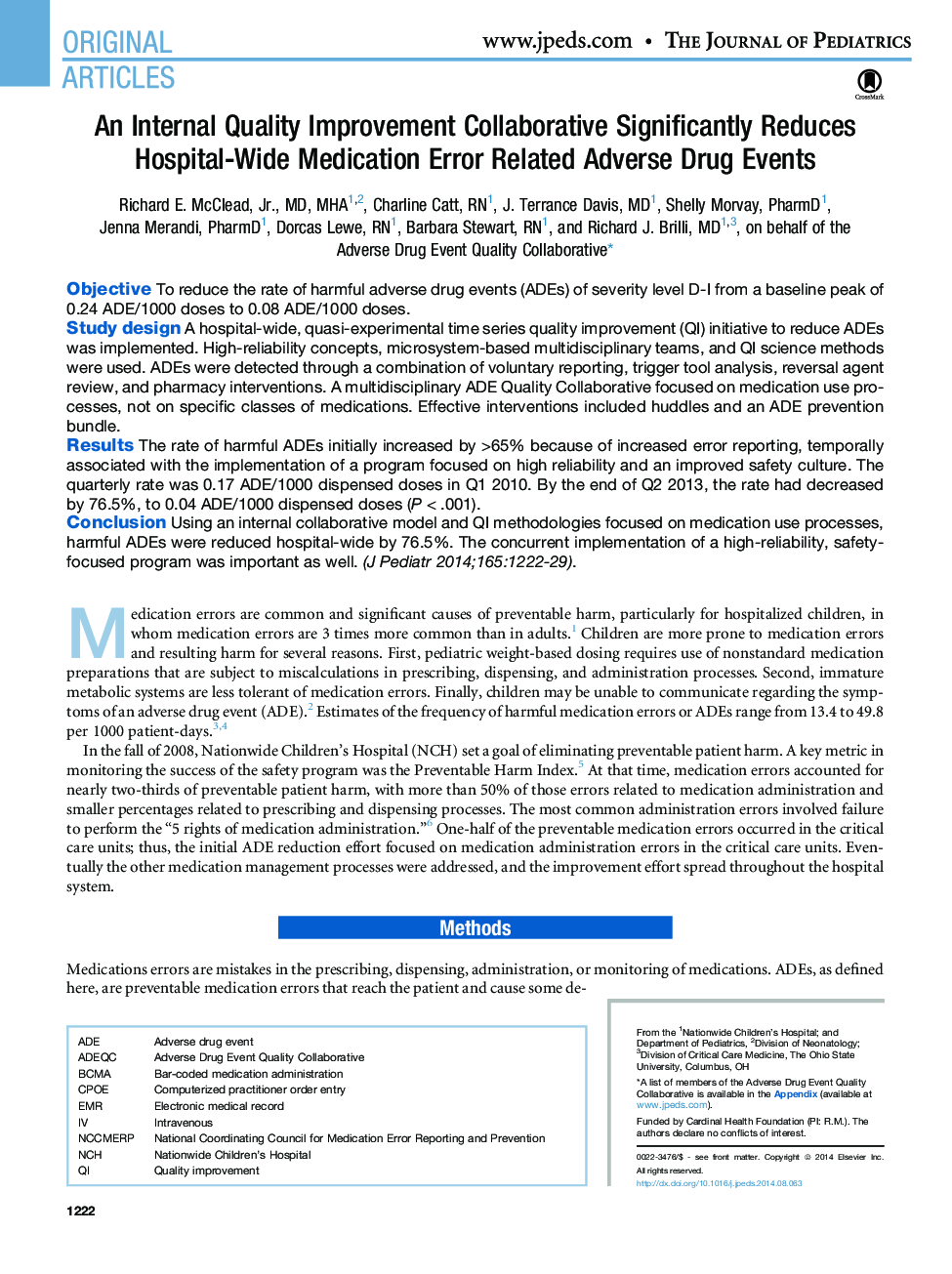| Article ID | Journal | Published Year | Pages | File Type |
|---|---|---|---|---|
| 6220168 | The Journal of Pediatrics | 2014 | 9 Pages |
ObjectiveTo reduce the rate of harmful adverse drug events (ADEs) of severity level D-I from a baseline peak of 0.24 ADE/1000 doses to 0.08 ADE/1000 doses.Study designA hospital-wide, quasi-experimental time series quality improvement (QI) initiative to reduce ADEs was implemented. High-reliability concepts, microsystem-based multidisciplinary teams, and QI science methods were used. ADEs were detected through a combination of voluntary reporting, trigger tool analysis, reversal agent review, and pharmacy interventions. A multidisciplinary ADE Quality Collaborative focused on medication use processes, not on specific classes of medications. Effective interventions included huddles and an ADE prevention bundle.ResultsThe rate of harmful ADEs initially increased by >65% because of increased error reporting, temporally associated with the implementation of a program focused on high reliability and an improved safety culture. The quarterly rate was 0.17 ADE/1000 dispensed doses in Q1 2010. By the end of Q2 2013, the rate had decreased by 76.5%, to 0.04 ADE/1000 dispensed doses (PÂ <Â .001).ConclusionUsing an internal collaborative model and QI methodologies focused on medication use processes, harmful ADEs were reduced hospital-wide by 76.5%. The concurrent implementation of a high-reliability, safety-focused program was important as well.
